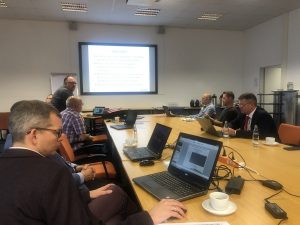 A couple of weeks ago, the INDIRES consortium met in Essen, Germany, for our fifth official partners’ meeting. Hosted by project partner DMT GmbH & Co. KG, the formal part of the meeting, held on Tuesday 8th October, involved a representative of each organisation delivering a report on their progress and achievements. In particular, each partner outlined the progress they’ve made since we last got together in April, presented their major achievements, and discussed the planned work for the next six months of the project. In addition, the University of Exeter, as project coordinator, hosted a discussion of various organisational issue concerned with the timely and successful completion of the project. Particular attention was given to the important issue of field trials, which will take place in the closing stages of the project, and which will involve testing equipment developed in the project in real coal mines in Poland and Slovenia.
A couple of weeks ago, the INDIRES consortium met in Essen, Germany, for our fifth official partners’ meeting. Hosted by project partner DMT GmbH & Co. KG, the formal part of the meeting, held on Tuesday 8th October, involved a representative of each organisation delivering a report on their progress and achievements. In particular, each partner outlined the progress they’ve made since we last got together in April, presented their major achievements, and discussed the planned work for the next six months of the project. In addition, the University of Exeter, as project coordinator, hosted a discussion of various organisational issue concerned with the timely and successful completion of the project. Particular attention was given to the important issue of field trials, which will take place in the closing stages of the project, and which will involve testing equipment developed in the project in real coal mines in Poland and Slovenia.
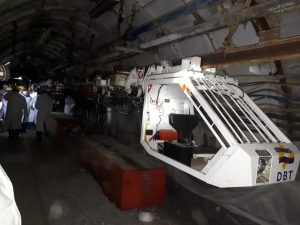 The second day of the meeting involved a visit to the training mine at Recklinghausen. This facility has galleries that are typical in size to those in working mines and is fitted with real mine machinery, but there is no possibility of explosive methane being present, which means that there are no restrictions on equipment that can be used in the mine. Because some of the equipment being developed in INDIRES will not progress, during the project, to being certified for use in explosive atmospheres, this is of potential use for testing equipment developed in INDIRES. With this in mind, therefore, following the visit, a short follow-up meeting was held to discuss testing opportunities.
The second day of the meeting involved a visit to the training mine at Recklinghausen. This facility has galleries that are typical in size to those in working mines and is fitted with real mine machinery, but there is no possibility of explosive methane being present, which means that there are no restrictions on equipment that can be used in the mine. Because some of the equipment being developed in INDIRES will not progress, during the project, to being certified for use in explosive atmospheres, this is of potential use for testing equipment developed in INDIRES. With this in mind, therefore, following the visit, a short follow-up meeting was held to discuss testing opportunities.

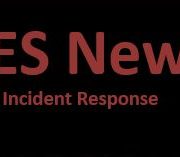
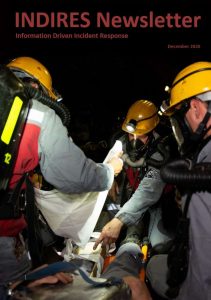 The full results of the project will be publicised in the official Final Report, and User Documentation is now available on this website – see separate news item. However, for a quick summary of the results of the INDIRES Project, we are providing you with access to our third newsletter.
The full results of the project will be publicised in the official Final Report, and User Documentation is now available on this website – see separate news item. However, for a quick summary of the results of the INDIRES Project, we are providing you with access to our third newsletter.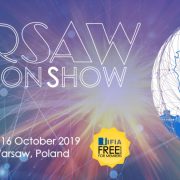
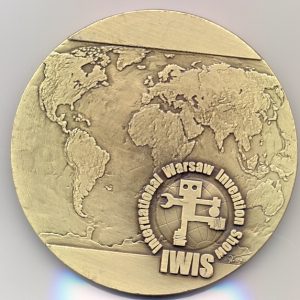 IWIS – the International Warsaw Invention Show – is the largest international event related to innovation and inventiveness in Poland and one of the biggest in Europe. In recent years, IWIS has attracted representatives from many counties in Asia, Africa, America and Europe, with delegates attending from Saudi Arabia, Croatia, Egypt, Iran, Canada, Malaysia, Korea and the United Kingdom, in addition to more local countries.
IWIS – the International Warsaw Invention Show – is the largest international event related to innovation and inventiveness in Poland and one of the biggest in Europe. In recent years, IWIS has attracted representatives from many counties in Asia, Africa, America and Europe, with delegates attending from Saudi Arabia, Croatia, Egypt, Iran, Canada, Malaysia, Korea and the United Kingdom, in addition to more local countries.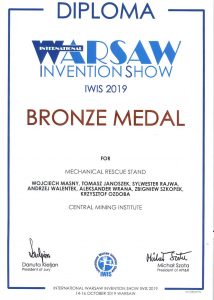 Recently, Polish and international inventors have presented more than 400 inventions at each year’s event. We are pleased to announce that, at IWIS 2019, which was held in October 2019, INDIRES project partner GIG received a bronze medal for the composite prop that they’ve developed in the project. The prop is much lighter than conventional roof supports, and will be used by rescue teams to secure the roof during rescue operations, or to stabilise emergency tunnels that have to be bored to provide access to areas of the mine cut off by falls of rock.
Recently, Polish and international inventors have presented more than 400 inventions at each year’s event. We are pleased to announce that, at IWIS 2019, which was held in October 2019, INDIRES project partner GIG received a bronze medal for the composite prop that they’ve developed in the project. The prop is much lighter than conventional roof supports, and will be used by rescue teams to secure the roof during rescue operations, or to stabilise emergency tunnels that have to be bored to provide access to areas of the mine cut off by falls of rock.
 A couple of weeks ago, the INDIRES consortium met in Essen, Germany, for our fifth official partners’ meeting. Hosted by project partner DMT GmbH & Co. KG, the formal part of the meeting, held on Tuesday 8th October, involved a representative of each organisation delivering a report on their progress and achievements. In particular, each partner outlined the progress they’ve made since we last got together in April, presented their major achievements, and discussed the planned work for the next six months of the project. In addition, the University of Exeter, as project coordinator, hosted a discussion of various organisational issue concerned with the timely and successful completion of the project. Particular attention was given to the important issue of field trials, which will take place in the closing stages of the project, and which will involve testing equipment developed in the project in real coal mines in Poland and Slovenia.
A couple of weeks ago, the INDIRES consortium met in Essen, Germany, for our fifth official partners’ meeting. Hosted by project partner DMT GmbH & Co. KG, the formal part of the meeting, held on Tuesday 8th October, involved a representative of each organisation delivering a report on their progress and achievements. In particular, each partner outlined the progress they’ve made since we last got together in April, presented their major achievements, and discussed the planned work for the next six months of the project. In addition, the University of Exeter, as project coordinator, hosted a discussion of various organisational issue concerned with the timely and successful completion of the project. Particular attention was given to the important issue of field trials, which will take place in the closing stages of the project, and which will involve testing equipment developed in the project in real coal mines in Poland and Slovenia. The second day of the meeting involved a visit to the training mine at Recklinghausen. This facility has galleries that are typical in size to those in working mines and is fitted with real mine machinery, but there is no possibility of explosive methane being present, which means that there are no restrictions on equipment that can be used in the mine. Because some of the equipment being developed in INDIRES will not progress, during the project, to being certified for use in explosive atmospheres, this is of potential use for testing equipment developed in INDIRES. With this in mind, therefore, following the visit, a short follow-up meeting was held to discuss testing opportunities.
The second day of the meeting involved a visit to the training mine at Recklinghausen. This facility has galleries that are typical in size to those in working mines and is fitted with real mine machinery, but there is no possibility of explosive methane being present, which means that there are no restrictions on equipment that can be used in the mine. Because some of the equipment being developed in INDIRES will not progress, during the project, to being certified for use in explosive atmospheres, this is of potential use for testing equipment developed in INDIRES. With this in mind, therefore, following the visit, a short follow-up meeting was held to discuss testing opportunities.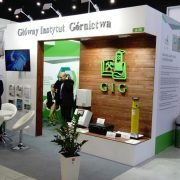
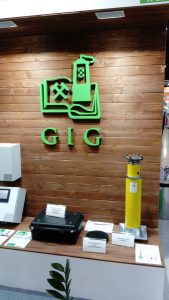 One of the first developments in INDIRES to be finalised, went on display to the public this week. Project partner GIG was one of 350 organisations from 12 countries to exhibit at the International Mining Fair in Katowice, Poland. Prominent on GIG’s exhibition stand was a prototype of their novel prop, made of composite materials for reduced weight, which is intended to support the roof of temporary tunnels that are excavated to provide access to trapped miners, following a serious incident in a mine that had cut off the normal routes to the area.
One of the first developments in INDIRES to be finalised, went on display to the public this week. Project partner GIG was one of 350 organisations from 12 countries to exhibit at the International Mining Fair in Katowice, Poland. Prominent on GIG’s exhibition stand was a prototype of their novel prop, made of composite materials for reduced weight, which is intended to support the roof of temporary tunnels that are excavated to provide access to trapped miners, following a serious incident in a mine that had cut off the normal routes to the area.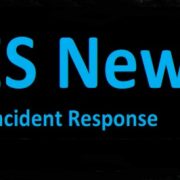
 The full results of the project will be publicised in the official Final Report after the completion of the project but, so you can follow progress throughout the course of the project, we will publish project newsletters at the end of the first and second years of the project.
The full results of the project will be publicised in the official Final Report after the completion of the project but, so you can follow progress throughout the course of the project, we will publish project newsletters at the end of the first and second years of the project.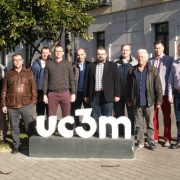
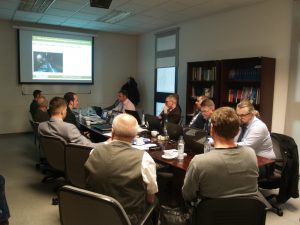 Organisations involved in the INDIRES project got together in Spain last week, hosted by project partner University Carlos III Madrid, for our fourth six-monthly progress meeting. We are now just over half way through the project and have recently submitted our first official report. Although that report documents the very significant amount of work that has been carried out to date, there is still a lot more to do as we approach the final year of the project during which several of the developments will be tested in working coal mines. Each project partner described the work they’ve been involved in since we last met six months ago, and also said something of their plans for the immediate future. Following the main meeting, and emphasising the collaborative nature of much of the work, several partners had a separate technical meeting.
Organisations involved in the INDIRES project got together in Spain last week, hosted by project partner University Carlos III Madrid, for our fourth six-monthly progress meeting. We are now just over half way through the project and have recently submitted our first official report. Although that report documents the very significant amount of work that has been carried out to date, there is still a lot more to do as we approach the final year of the project during which several of the developments will be tested in working coal mines. Each project partner described the work they’ve been involved in since we last met six months ago, and also said something of their plans for the immediate future. Following the main meeting, and emphasising the collaborative nature of much of the work, several partners had a separate technical meeting.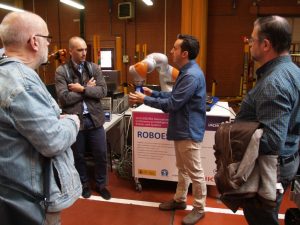 After the formal part of the meeting on the Tuesday, we were given a tour of the Robotic Lab at the University Carlos III Madrid on the Wednesday. First of all, we saw one of the robots that’s being developed in INDIRES, for investigating parts of a mine affected by an accident, to help rescue controllers to decide whether it’s safe to send human rescue personnel into the area. We were then shown a wide range of robots being developed for other projects. Included here were industrial robots, a robot that is able to bore through the ground, and several robots that have been developed for medical therapeutic purposes. We were quite amused by a small, fury, talking robot which is able to engage with children, with an initial application in the paediatric department of an oncological hospital.
After the formal part of the meeting on the Tuesday, we were given a tour of the Robotic Lab at the University Carlos III Madrid on the Wednesday. First of all, we saw one of the robots that’s being developed in INDIRES, for investigating parts of a mine affected by an accident, to help rescue controllers to decide whether it’s safe to send human rescue personnel into the area. We were then shown a wide range of robots being developed for other projects. Included here were industrial robots, a robot that is able to bore through the ground, and several robots that have been developed for medical therapeutic purposes. We were quite amused by a small, fury, talking robot which is able to engage with children, with an initial application in the paediatric department of an oncological hospital.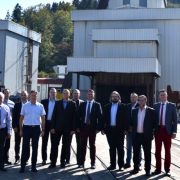
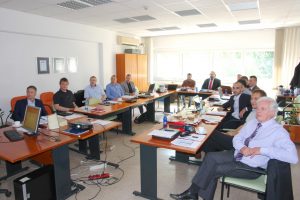 The INDIRES consortium met together in Slovenia last week, hosted by project partner Premogovnik Velenje, for our latest twice-yearly progress meeting. It seems hard to believe that we have now met together on three separate occasions and that we are approaching the half-way point of the INDIRES project. However, the presentations given by each partner, detailing the work they have carried out in the five months since the previous partners’ meeting, served to illustrate the large amount of work that has been carried out since we first met together, almost exactly a year ago.
The INDIRES consortium met together in Slovenia last week, hosted by project partner Premogovnik Velenje, for our latest twice-yearly progress meeting. It seems hard to believe that we have now met together on three separate occasions and that we are approaching the half-way point of the INDIRES project. However, the presentations given by each partner, detailing the work they have carried out in the five months since the previous partners’ meeting, served to illustrate the large amount of work that has been carried out since we first met together, almost exactly a year ago.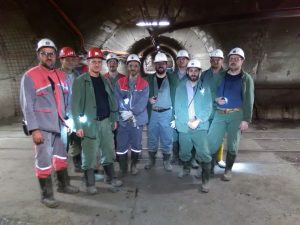 One of the strengths of the INDIRES consortium is its interdisciplinary nature. Indeed we have partners who are involved in coal production and researching new mining technology through to partners who are contributing their specialist skills such as radio communication and robotics. The underground trip into the Velenje Coal Mine was, therefore, a valuable experience for those people who have valuable technical skills but do not have a mining background. These people reported that the trip was invaluable in providing a better insight into the environment and the harsh conditions in which the equipment being developed in INDIRES has to operate and survive.
One of the strengths of the INDIRES consortium is its interdisciplinary nature. Indeed we have partners who are involved in coal production and researching new mining technology through to partners who are contributing their specialist skills such as radio communication and robotics. The underground trip into the Velenje Coal Mine was, therefore, a valuable experience for those people who have valuable technical skills but do not have a mining background. These people reported that the trip was invaluable in providing a better insight into the environment and the harsh conditions in which the equipment being developed in INDIRES has to operate and survive.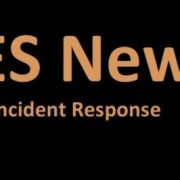
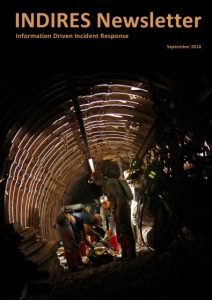 The full results of the project will be publicised in the official Final Report after the completion of the project but, so you can follow progress throughout the course of the project, we will publish project newsletters at the end of the first and second years of the project.
The full results of the project will be publicised in the official Final Report after the completion of the project but, so you can follow progress throughout the course of the project, we will publish project newsletters at the end of the first and second years of the project.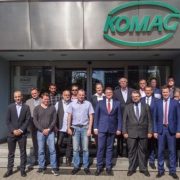
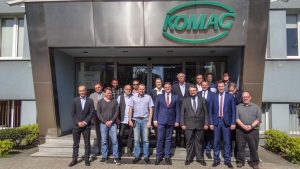 KOMAG hosted our second Partners’ Meeting in Gliwice, Poland, on 18th and 19th April 2018. On the first day, each partner organisation gave a presentation on the research they’d conducted during the first 9 months of the INDIRES project. It was encouraging to see the significant amount of progress that has been made so far and the collaboration between partners, both of which give us confidence that a very successful outcome will be achieved. The first day concluded with a discussion of organisational issues.
KOMAG hosted our second Partners’ Meeting in Gliwice, Poland, on 18th and 19th April 2018. On the first day, each partner organisation gave a presentation on the research they’d conducted during the first 9 months of the INDIRES project. It was encouraging to see the significant amount of progress that has been made so far and the collaboration between partners, both of which give us confidence that a very successful outcome will be achieved. The first day concluded with a discussion of organisational issues.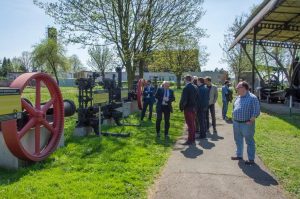 The second day started with a presentation on their organisation by project partner the Silesian University of Technology. This was followed by a tour of the University’s laboratory and workshop facilities. In the afternoon, partners were taken to a nearby museum based around a former mine. In a change from coal mining, however, the mine at Tarnowskie Góry had been a major producer of silver, lead and zinc. A closing ceremony was held at KOMAG’s offices.
The second day started with a presentation on their organisation by project partner the Silesian University of Technology. This was followed by a tour of the University’s laboratory and workshop facilities. In the afternoon, partners were taken to a nearby museum based around a former mine. In a change from coal mining, however, the mine at Tarnowskie Góry had been a major producer of silver, lead and zinc. A closing ceremony was held at KOMAG’s offices.